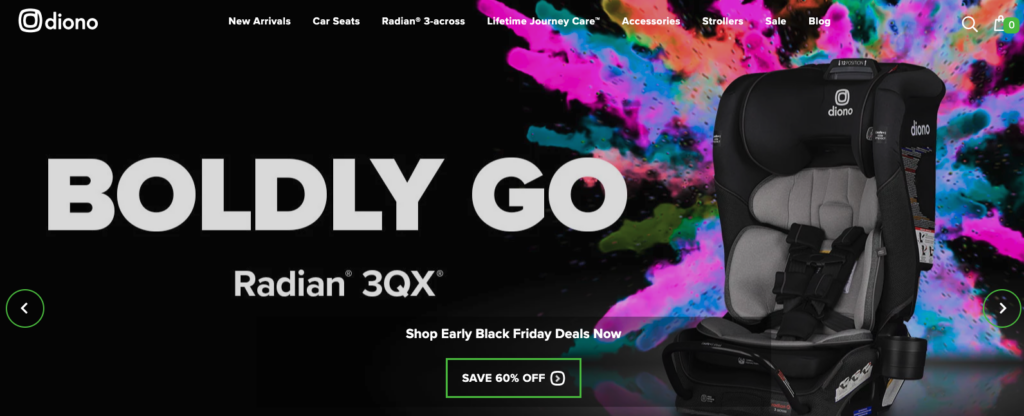This piece was written by Reed Hartman, Content Marketing Manager at BigCommerce.
In a world flooded by marketing, advertising, and purchasing opportunities, power truly lies in the hands of the buyer. They won’t spend their hard-earned money somewhere they’re having a subpar purchasing experience. Instead, they can go to one of another 10 merchants providing similar (or in some cases, the exact same) product and purchase it with less friction.
This doesn’t just apply to direct-to-consumer (DTC) purchases. As digital natives age into their roles as business-to-business (B2B) buyers, they bring with them their high expectations for a frictionless ecommerce experience.
Recently, BigCommerce commissioned Price Intelligently by Paddle to survey over 1,000 B2B buyers to see what they really want from their ecommerce experience. The results show that B2B sellers that stand out and provide their buyers with a first-class purchasing experience will see massive success in the future. Throughout this piece, we’ll dive deeper into data from within the report, and see how your B2B ecommerce business can see greater sales by embracing new technologies and providing high-quality customer experiences.
Where Are B2B Buyers Shopping?
Much like in their everyday lives, the data show that B2B buyers are making purchases through a variety of channels. 75% of respondents made a purchase using a supplier’s website or app in the past year (underscoring the importance of a high-quality website experience), while 57% made purchases on B2B marketplaces.
Unexpectedly, the data showed that 42% of respondents had made a purchase with sales representatives, while 45% made purchases in-store or at a vendor’s warehouse. This signals that these channels shouldn’t be cast by the wayside. Instead, sellers need to focus on an omnichannel approach to their sales and marketing processes that incorporates a variety of interactions and purchasing opportunities for their customers.
What Do B2B Buyers Value Most When Shopping Online?
Before we talk about what your customers want, let’s talk about what they don’t. 40% of respondents indicated that inaccurate pricing and shipping data was the number one pain point they experienced when shopping online. This was followed by slow load times (29%) and difficult-to-contact customer support (28%).
When it came to features that customers value most, respondents overwhelmingly indicated that detailed product information was the highest-value feature of an online shopping experience.
It’s important to ensure every piece of information on your site, from the product information itself all the way through to shipping rates is detailed and as accurate as possible. Using tools like Constructor can help streamline the product information and discovery process for customers by using AI-driven personalization technology to ensure your customers are finding exactly what they’re looking for, whether that’s on your site, marketplaces, or search engines.
Creating a Customer-Centric Shopping Experience
A major takeaway from our data is that customers shop online because it’s easy and convenient. They expect to find what they’re looking for quickly, without being met with inaccurate (or nonexistent) product information throughout the purchasing process. What should your website look like when the customer’s experience is put first?
Your website should be clean and easy to navigate
Customers have high expectations when it comes to design and navigation. After all, they’re used to shopping online in their personal lives. They know what high quality design looks like. If your website looks like the Space Jam website from 1996, chances are they’re going to shop elsewhere. (Unless, of course, that’s what you’re going for. You do you.)
Your website should include clear, detailed product information and descriptions
This doesn’t just mean a fluffy, adjective-filled, keyword-vomit paragraph on your product page. This means detailed information on sizes and dimensions, compatibility with other products, colors — the list goes on and on. Be as detailed as possible and answer any questions your customer could have before they even have them.
Your pricing should be accurate to that specific customer
Whether it’s deals for specific customers or bulk quantities, chances are your business offers different pricing for different groups of buyers. Using an ecommerce platform that allows you to segment these specific price groups means customers are seeing the same pricing information whether they’re shopping online or buying through a sales rep, unifying the experience across channels.
Your checkout should be seamless
B2B checkout deserves a piece all on its own, but a simple thing your business can do is offer the payment methods that your customers want. 38% of respondents to our survey used automatic clearing house (ACH) transfers to pay for products, and 31% used PO invoices. Sellers should offer these (and other) B2B-specific payment methods to their customers to ensure they can pay their way.
Your post-purchase experience should be just as frictionless as purchasing
Shoppers expect fast shipping, detailed delivery information (including updates or alerts on their products), and a simple return policy with strong customer service.
B2B Ecommerce Done Right
Diono

Diono was an early adopter of B2B Edition, BigCommerce’s next-level B2B product which offers enterprise-level B2B functionality to enable B2B operations online and provide customers with seamless transactions and self-service account capabilities.
They needed a more robust technology stack that allowed them to incorporate best of breed technologies on an infrastructure that could handle it all. Diono has been able to grow globally as well, clearly meeting their customers where they shop along with the payment options they need to complete their transactions.
Diono is now using Feedonomics to maximize all that BigCommerce can offer and maximize their merchandising strategy. After migrating to BigCommerce, Diono experienced a 44% increase in transactions, a 48% increase in average order value (AOV) and a 114% increase in revenue.
An Integrated Approach to B2B Ecommerce
While we’ve talked a lot about the on-site experience for B2B shoppers, we’ve left out a key segment of buyers: the 57% that make purchases using online marketplaces. In DTC ecommerce, businesses have embraced an omnichannel approach for years, selling on social channels, search engines, marketplaces, and their own website.
According to data from McKinsey, the average buyers now use ten or more channels as they journey through the buying process. Additionally, 67% of B2B buyers start their purchase journeys online.
Just as the experiences and expectations mentioned above have bled over from buyers’ experiences with their personal shopping, omnichannel expectations will become more prevalent in digital, self-service interactions. To reiterate data from our survey, 57% of buyers make purchases using online marketplaces, and 47% of buyers are using online marketplaces to research products.
These marketplaces — along with other channels apart from a seller’s website — should be thought of not only as direct sales tools, but also as research platforms. Non-digital assets, like sales teams, customer service reps, and in-store experiences, should be thought of as effective tools for driving offline and online sales.
Embracing a Digital Transformation
While many businesses have embraced the digital future, some still are finding it challenging to adapt their existing business models to this digital-first mindset.
Transformation is the name of the game when it comes to B2B ecommerce. It’s not that B2Bs are averse to technological advances; far from it. Many B2B sellers were early adopters of ecommerce technology — and their current ecommerce experience shows it. Prices are hidden behind “Talk to a Sales Rep” buttons. Bulk ordering is impossible. Checkout is non-existent.
When we’ve talked to some of our merchants about their past experiences, it wasn’t that they didn’t want to change, it’s that their ecommerce technology rendered them unable to make the necessary changes they needed to succeed. Their legacy technology was so cumbersome, so difficult to use, it was holding them back from growing their business.
Now is the time for B2Bs to invest in technology that provides the right flexibility for them to respond to changes in markets and consumer expectations. Research from Forrester shows that companies committed to a future-fit technology strategy grew revenue 1.8 times faster than their peers.
In our 2022 B2B Trends survey, we found that 35% of US-based B2B businesses said investing in ecommerce platform technology is one of their top three priorities for the next 12 months. And that number is even higher this year — a DC360 report found that B2B companies put ecommerce platforms and applications (59%) at the top of their technology shopping list for 2023.
“Businesses need to protect their digital investments and not succumb to the natural organizational response in budget-cutting during economic downturns. Downturns should cause organizations to tighten the discipline around digital investments — such as a laser focus on customer experience and revenue-generating tech like ecommerce platforms — so the anticipated value is fully realized.”
– Rosie Rivel, Chief Information Officer at BigCommerce
During the Forrester Tech and Innovation Summit, Forrester stressed that businesses should not pull back on digital innovation or investment during economic slowdowns. Instead, this is the best time to invest in ecommerce and find the right tech stack to survive and thrive.
What You Need to Know
Throughout this piece, we’ve looked at a variety of topics, from consumer preferences to omnichannel commerce, but the key takeaway is that a positive, customer-centric experience is vital to your ecommerce success.
Every piece of your digital strategy, from marketing to product discovery, purchasing to shipping, should have the customer and their buying experience at its core. The most effective way to achieve this customer-first mentality is with agile, flexible digital technology that can not only provide you with the right tools you need, but also allow you to pivot and adapt when necessary.
Tools like Constructor do this innately, using AI and machine learning to quickly adapt to changes in consumer and prospect data. And tools like BigCommerce can provide the steady-yet-flexible foundation you need for future growth.
Want to read more about B2B buyer habits? Download the full report from BigCommerce here.

